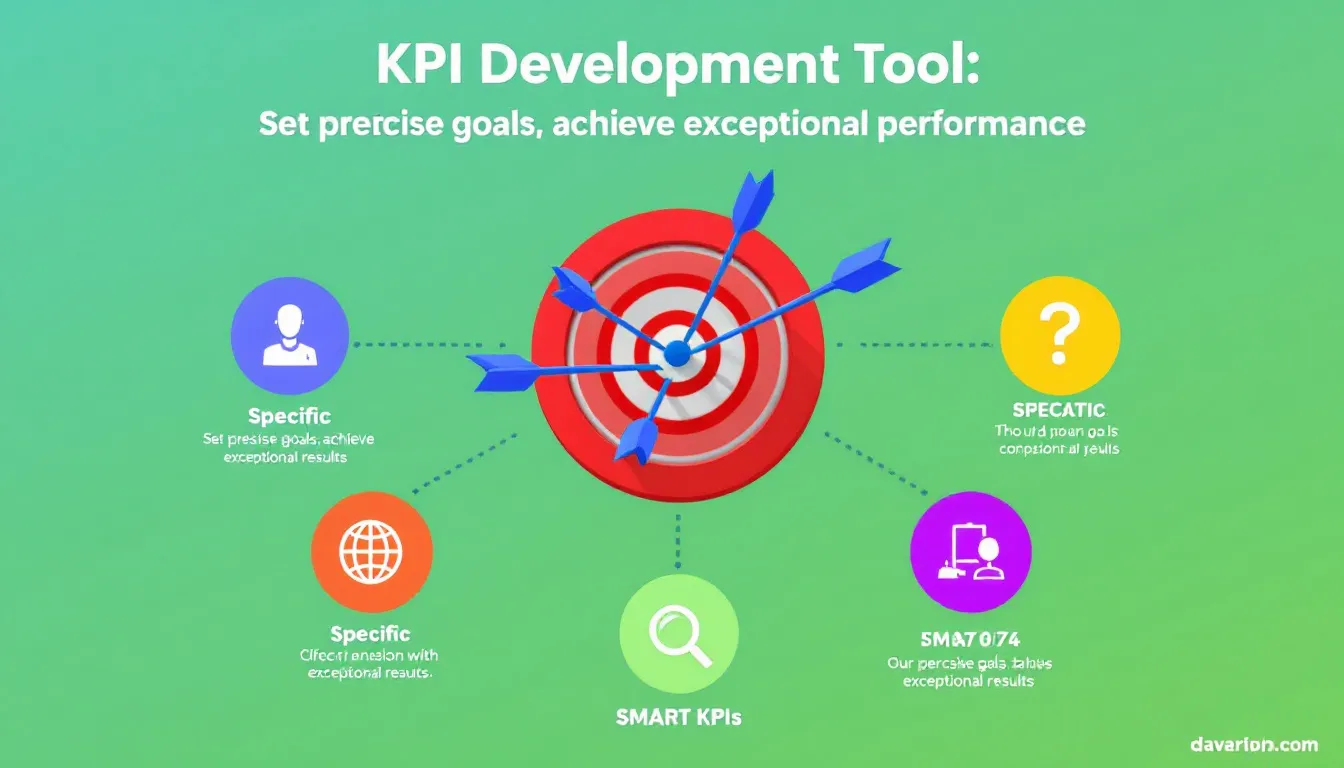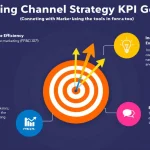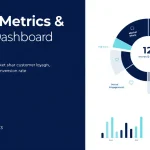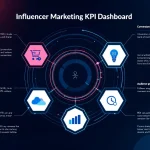KPI Generator
Is this tool helpful?
How to Use the KPI Generator Tool Effectively
You can easily develop tailored Key Performance Indicators (KPIs) for your organization using this KPI Generator. Follow these steps to get precise and actionable metrics that drive performance improvements:
- Enter a Specific Metric: Provide the exact metric you want KPIs for. For example, try “Supply Chain Efficiency” or “Website Traffic Conversion.” This focuses the tool on what you want to measure and improve.
- Specify Your Organization Type (Optional): Add your industry or sector to customize KPIs to your environment. Examples include “Financial Services Firm” or “Non-profit Educational Institution.”
- Outline Strategic Goals (Optional): Describe your key business objectives briefly. For instance, “Reduce operational costs by 8% over the next 12 months” or “Enhance online engagement by 25% this fiscal year.” This aligns KPIs with your strategic priorities.
- Set Preferred Time Frame (Optional): Indicate how often you want to measure your KPIs, such as “Weekly,” “Biannual,” or “Fiscal Quarter.” This helps set realistic review intervals.
- Generate KPIs: Click the generate option to receive customized KPI suggestions based on your inputs.
- Review and Use Your KPIs: Analyze the generated KPIs and apply them directly to your performance management activities. Use the suggestions as a foundation or adapt them for your specific needs.
What is the KPI Generator and How It Benefits You
The KPI Generator is an easy-to-use tool that helps you create SMART (Specific, Measurable, Achievable, Relevant, Time-bound) Key Performance Indicators tailored to your organization’s specific metrics and goals. Whether you’re a manager or a performance analyst, this tool saves time by providing relevant KPIs that improve decision-making and operational oversight.
Purpose of the KPI Generator
- Produce customized KPIs based on your unique organizational context.
- Align performance metrics directly with your strategic objectives.
- Streamline the KPI development process for teams across industries.
- Offer actionable insights that support data-driven management.
Key Benefits
- Customized Metrics: Get KPI suggestions that reflect your industry and organizational priorities.
- Time-Saving: Avoid complicated manual research and brainstorming by generating effective KPIs quickly.
- Strategic Alignment: Ensure KPIs support your broader business goals for meaningful performance tracking.
- Comprehensive Coverage: Receive a balanced set of KPIs that cover different angles of your chosen metric.
- Improved Decision-Making: Use precise KPIs to monitor progress and guide your next steps confidently.
How to Apply the KPI Generator in Real-World Scenarios
Though this tool works as an API-powered form, it offers immense practical value across various business areas. Here are examples of how you can apply the generated KPIs effectively:
1. Enhancing Customer Experience
For a hospitality business aiming to improve guest satisfaction, the tool can generate KPIs like:
- Guest Satisfaction Index
- Average Check-in Time
- Percentage of Repeat Guests
- Online Review Ratings
- Complaint Response Time
These KPIs give clear insights into service quality and help you prioritize improvements.
2. Manufacturing Efficiency
A manufacturing plant targeting better process control might generate KPIs such as:
- Yield Rate
- Machine Downtime Percentage
- Production Cost per Unit
- Defect Rate
- Inventory Turnover Ratio
These KPIs help identify bottlenecks and reduce waste effectively.
3. Digital Marketing Performance
Marketing teams can track campaign success with KPIs like:
- Lead Conversion Rate
- Cost per Lead
- Customer Acquisition Cost (CAC)
- Engagement Rate on Social Media
- Return on Investment (ROI) for Ads
These measures enable you to optimize campaign strategy and budget usage.
4. Project Management Tracking
Project managers can use the tool to monitor progress with KPIs such as:
- Percentage of Completed Tasks On-Time
- Budget Variance
- Issue Resolution Time
- Sprint Completion Rate
- Stakeholder Satisfaction Score
These KPIs help maintain control over timelines and quality throughout project phases.
Understanding SMART KPIs for Organizational Success
KPIs created with this tool follow the SMART framework, making them practical and useful for driving your business results.
- Specific: The KPI focuses on one clear aspect, such as “Monthly Website Visitors.”
- Measurable: It uses quantifiable data points to track performance.
- Achievable: It sets realistic goals, considering your resources.
- Relevant: The KPI aligns with your key business priorities and strategic objectives.
- Time-bound: It includes a defined timeframe, such as quarterly or yearly targets.
Frequently Asked Questions About the KPI Generator
How many KPIs should I assign per metric?
Focus on 3 to 7 KPIs per metric to keep your performance tracking manageable and meaningful. This range balances breadth and depth without overwhelming your team.
Can I adjust the KPIs suggested by this tool?
Yes, you can customize the generated KPIs to better suit your organization’s context and capabilities. Use them as starting points and refine as needed.
How often should I update my KPIs?
Review and refresh your KPIs every quarter or six months. This ensures they stay aligned with evolving goals but avoid frequent changes that disrupt trend analysis.
What if I’m unsure about my organization’s strategic goals?
Consult leadership or refer to mission statements to clarify strategy. Meanwhile, you can input your focus metric into the tool and add goals later to enhance alignment.
Is this tool suitable for non-profit organizations?
Absolutely. Specify your organization type as “Non-profit” and set goals focused on impact or community service to receive relevant KPI suggestions.
How do I ensure my team adopts the new KPIs?
- Clearly explain why each KPI matters.
- Offer training on measurement and reporting.
- Make KPI data easily accessible.
- Discuss KPI progress regularly in meetings.
- Link performance outcomes to rewards and evaluations.
What if the generated KPIs don’t fully fit my needs?
- Refine your input details for better alignment.
- Use the suggestions as a foundation and modify accordingly.
- Consult colleagues or industry experts for additional ideas.
- Consider generating KPIs for multiple related metrics for broader insight.
Conclusion: Make Data-Driven Performance Improvements with Tailored KPIs
The KPI Generator empowers you to create SMART KPIs that reflect your specific metrics and organizational goals. Using well-defined and aligned KPIs helps you monitor performance accurately, identify improvement areas, and guide strategy effectively. Remember, the value comes from how consistently you use and refine your KPIs over time. Engage your team, integrate KPI tracking into your routines, and adjust as your organization evolves to achieve strong, sustainable results.
Important Disclaimer
The calculations, results, and content provided by our tools are not guaranteed to be accurate, complete, or reliable. Users are responsible for verifying and interpreting the results. Our content and tools may contain errors, biases, or inconsistencies. Do not enter personal data, sensitive information, or personally identifiable information in our web forms or tools. Such data entry violates our terms of service and may result in unauthorized disclosure to third parties. We reserve the right to save inputs and outputs from our tools for the purposes of error debugging, bias identification, and performance improvement. External companies providing AI models used in our tools may also save and process data in accordance with their own policies. By using our tools, you consent to this data collection and processing. We reserve the right to limit the usage of our tools based on current usability factors.







